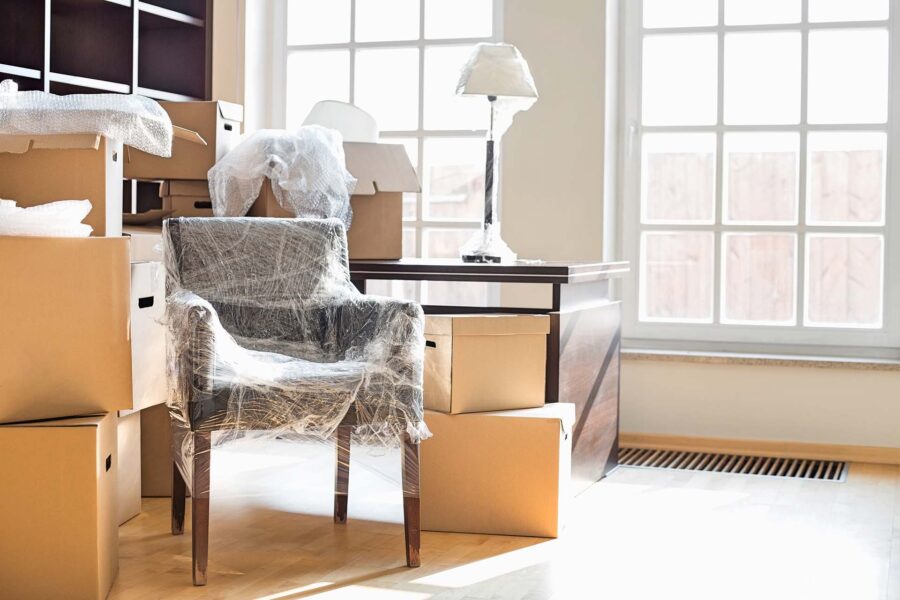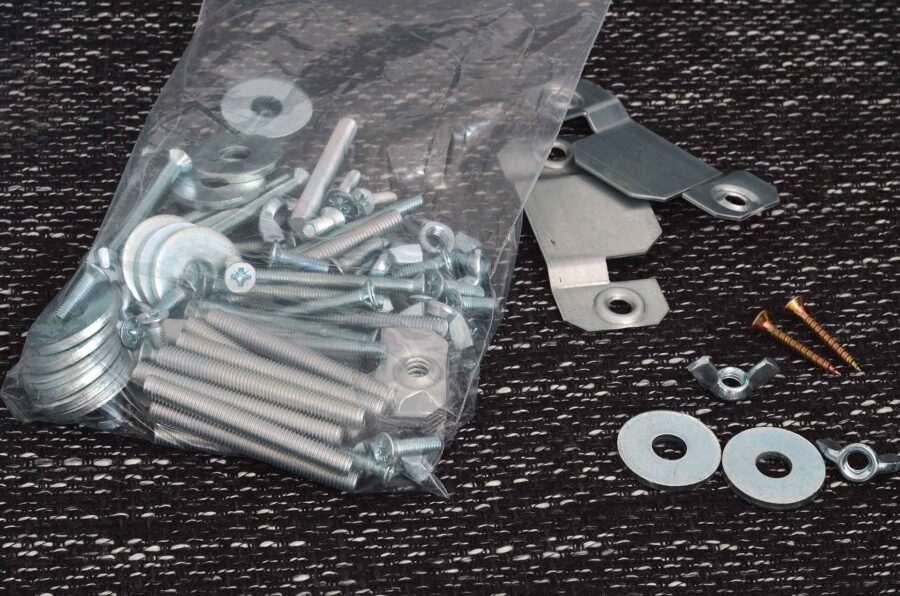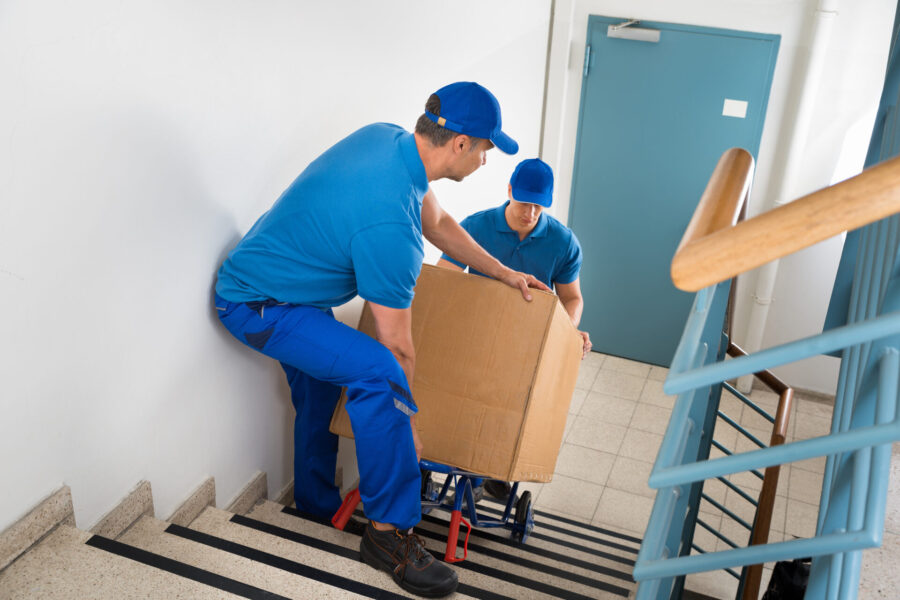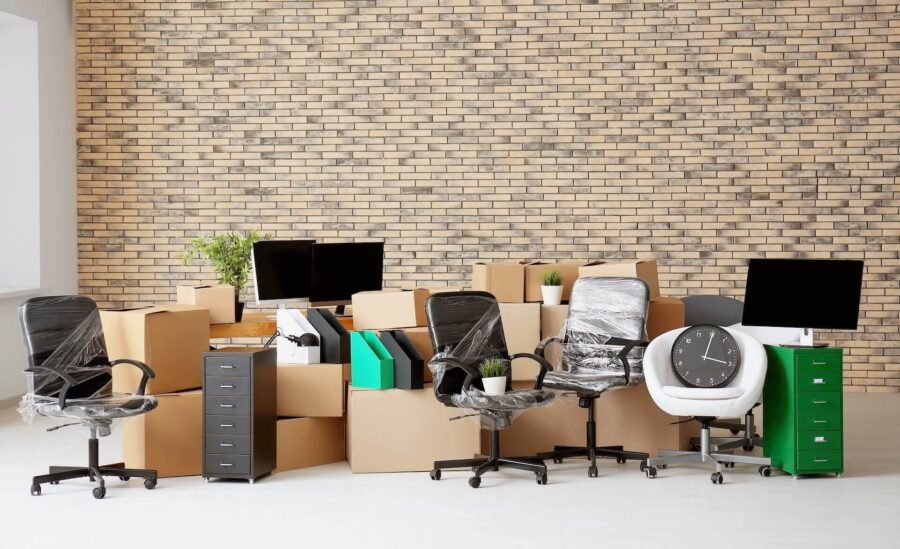

How to Move a Heavy Desk – A Step-By-Step Guide to a Safe and Smooth Transition
Posted in How-to on October 24, 2023
Relocating heavy objects like desks may seem daunting, but with the right guidance, it can be a manageable task. In this thorough step-by-step guide on how to move a heavy desk, we’ll walk you through the process, providing expert tips and techniques to ensure a safe and smooth transition. Whether you’re relocating or rearranging your space, these insights will help you tackle the challenge with confidence.
When moving a heavy desk, start by assessing its weight and dimensions, clearing it of its contents, and protecting fragile or valuable items. Consider dismantling the desk for easier transport and keeping track of all hardware. Ask for help, gather essential tools and supplies, and master proper lifting techniques to prevent injuries. After relocation, reassemble the object accurately to ensure a stable setup in its new location. If you find it overwhelming to manage it by yourself, consider hiring long-distance movers for the job.
Assess Your Desk’s Weight and Dimensions
Understanding your desk’s size and weight provides essential insights into the logistics of your relocation. Consider the materials used in its construction, whether it’s made of wood, metal, glass, or a combination of these, as each material may require different handling methods. Additionally, take note of any drawer and storage compartments, as they can add weight and complexity to the task, requiring emptying and securing their contents before you move to another state.

Clear the Desk of Contents and Get Rid of Unnecessary Clutter
To lighten the load and ensure the safety of your belongings, remove items from your desk’s drawers and surface. It’s essential to follow instructions on emptying all compartments, leaving no items behind that could potentially shift or get damaged during transit.
Also, take the opportunity to declutter your desk drawers. Keep only important documents, office supplies, and personal items. Donate unnecessary items like extra lamps, excess printing paper, decorations, or office accessories that you no longer use to Goodwill.
You can also recycle or discard items that are no longer functional or hold sentimental value. In the end, downsizing for a relocation not only lightens the load but also helps create a fresh start in your future abode.
If you’re tired of getting tangled up with all the cables that come with desktop computers, check the video below on how to organize a cable-free table space at your future residence.
Use the Desk’s Drawers as an Additional Storage Solution
If you’re looking to maximize storage space and keep the moving process smoother, consider utilizing your desk’s drawers creatively. These drawers can serve as a valuable storage solution for lighter items like socks, papers, and smaller office supplies.
By carefully organizing and storing such items within the drawers, you not only optimize space but also ensure that the desk remains manageable to move, avoiding unnecessary strain or difficulty caused by a heavier load. Whether you choose to pull them out and shrink-wrap them or tape them shut inside the desk, this approach simplifies both packing and unpacking, making your relocation a breeze.
Protect Valuable and Fragile Items During the Move
Take extra precautions to ensure valuable or fragile items are properly secured and protected throughout the transportation. For those items that were stored on its surface, consider wrapping them individually in protective materials such as bubble wrap or foam to safeguard against impact.
When it comes to artwork or fragile electronics, place them in specialized containers or proper-sized boxes with ample cushioning to prevent breakage. Finally, don’t forget to label these boxes as “Fragile” to ensure careful handling.

Gather Necessary Tools, Supplies, and Equipment
Having the right tools and packing materials is paramount when it comes to moving large items. These essentials not only make the process more manageable but also help protect your item and its surroundings from potential damage. Here’s a list of tools and equipment you’ll need:
- Furniture dolly – dolly with sturdy wheels is essential for moving heavy items across flat surfaces.
- Lifting straps – these adjustable straps help distribute the weight and provide better control when lifting and moving these objects.
- Screwdrivers and Allen wrenches – to disassemble and reassemble your item, you may need various types and sizes of screwdrivers and wrenches.
- Adjustable wrench – useful for tightening or loosening bolts and nuts.
- Measuring tape – helps ensure your object will fit through doorways and hallways in both of your locations.
- Furniture sliders – eases the movement of bulky components and furniture without damaging the floors.
Besides these tools and equipment, you will need some protective supplies for the safe and damage-free relocation of your item as well. So here’s a list of different packing materials:
- Moving blankets – thick, padded blankets provide cushioning and protection for your desk during transport.
- Bubble wrap – ideal for wrapping fragile or delicate items to prevent damage.
- Clean paper – used for wrapping smaller items and filling gaps in boxes to prevent shifting.
- Duct tape – securely seals boxes and packing materials.
- Twist ties – keeps items like cables and cords organized and tangle-free.
- Sealable plastic bags – useful for organizing and storing small hardware pieces.
Dismantle Your Heavy Desk if Possible
If the desk allows it, consider disassembling it to reduce its size and weight. Begin by removing any detachable components, such as keyboard trays, drawers, or detachable legs. In case it has modular sections, carefully disassemble everything and secure them with appropriate packing materials.
Keep Track of the Hardware
To simplify the reassembly process, it’s essential to organize and label all hardware, such as screws, bolts, and other small pieces. Place each set of hardware in separate sealable plastic bags or small containers, ensuring they are clearly labeled with descriptions of their contents and their belonging part.
Store all these bags or containers together in a larger plastic bag or designated box to keep everything related to the object in one place. Take photos of each step of the disassembly process and keep assembly instructions nearby, as these can serve as valuable visual and written references during the reassembly phase, ensuring your item is put back together correctly and efficiently.

Learn Proper Lifting Techniques on How to Move a Heavy Desk
Moving heavy objects around demands precision and care to avoid both personal injury and damage to your furniture. To master the art of safely lifting and relocating a substantial piece of furniture, follow these essential techniques. Stand with your feet shoulder-width apart, bending your knees instead of your back when you reach down to lift.
Keep your back straight, and maintain a firm grip on the object, placing your hands on opposite corners or edges. Engage your leg muscles to lift it, using the power from your legs to minimize strain on your back.
Try to keep the item close to your body as you lift, and avoid twisting your torso while carrying it. When setting the object down, bend your knees to lower it gently. If the item is exceptionally hefty or awkwardly shaped, enlist a helping hand or use lifting straps or tools like dollies to distribute the weight more evenly.
Importance of Teamwork in Desk Relocation
Coordination is key during lifting and moving stuff with multiple people. Establish clear communication to synchronize movements and avoid accidents. Designate roles based on each person’s strength and ability, ensuring that everyone knows their responsibilities. When lifting, ensure that everyone is lifting at the same time and try to distribute the weight evenly.

Find a Way to Navigate Through Tight Spaces
Before you start the heavy-lifting part of the process, plan your moving strategy. You should compare your desk’s dimensions with the spaces you’ll be moving through to identify potential obstacles.
Clear the path by removing any hindrances in advance, and consider tilting or maneuvering the object to fit through narrow areas. Furniture sliders or protective materials can aid in gliding and safeguarding surfaces.
Special Considerations for High-Rise Buildings
When navigating through multi-story buildings, it’s essential to adhere to specific guidelines. Take time to assess potential challenges like narrow hallways or staircases and formulate a plan to navigate through them. Ensure the object is securely held or strapped to prevent accidents.
Utilize elevators whenever possible to transport this item between floors, but ensure that they are padded to prevent damage. Coordinate elevator usage with building management and adhere to any scheduling requirements they may have. Taking these preparatory measures will help streamline the relocation process, reducing the risk of damage or injury during the move.

Unpack and Reassemble Your Desk After Relocation
When moving cross-country, unpacking and reassembling require a systematic approach to ensure a stress-free transition. Begin by unpacking all the components and items you carefully packed before the relocation. Refer to the labels on your bags or containers to locate the hardware needed for reassembly.
Lay out all the parts in an organized manner and consult any assembly instructions you retained. Reverse the assembly process, this time starting with the base or frame and working your way up, attaching legs, drawers, and other components as instructed. Once it’s fully reassembled, conduct a thorough quality check to verify its stability and functionality.

Hire Cross-Country Movers to Do All the Grunt Work and Avoid Injuries
Keep in mind that moving across the country can be both exciting and daunting, but the right company will ensure that your transition is smooth and worry-free. At Cross Country Movers, we take pride in offering a comprehensive range of cross-country moving services tailored to meet your needs. Our commitment to excellence extends to providing expert packing services while ensuring that every aspect of your relocation is handled with care and precision.
We understand that long-distance moving carries a risk of injuries, which is why our team is dedicated to taking on all the grunt work for you. Let us shoulder the burden so you can focus on the excitement of your journey ahead.

Our Mission Is Accomplished Only When Your Belongings Are Successfully Relocated
Your seamless relocation experience is our top priority at Cross Country Movers. Our mission is to handle and ship your cherished belongings with precision and care, providing you with the peace of mind you deserve. Every item holds significance, and your trust in our services is invaluable. Let us be your partner in achieving a successful and safe relocation, and feel free to contact us today. Your journey begins now, and we’re here to ensure it’s a smooth and rewarding one.
FAQ
How to Move a Heavy Desk by Myself?
Relocating desks alone can be challenging due to their weight and size. It’s not only physically demanding but also poses a risk of injury. To ensure a safer and more manageable relocation, it’s recommended to disassemble it before relocation and enlist the assistance of a friend, family member, or professional mover. This will not only make the process easier but also reduce the chances of accidents or damage.
Is It Necessary to Disassemble This Item for Moving?
Disassembling your belongings before relocation may not always be necessary, but it is often a wise choice, particularly if it’s a large or intricate piece of furniture. By removing drawers, legs, and any detachable components, you not only reduce the overall weight but also make it easier to navigate doorways, stairs, and tight spaces.
What Type of Equipment Is Best for Moving Heavy Desks?
To move these objects efficiently and with minimal effort, consider using suitable equipment such as furniture sliders, dollies, or lifting straps. Furniture sliders can be placed under its legs, allowing it to glide smoothly across the floor. Dollies provide stable support and wheels for easier maneuvering while lifting straps help distribute the weight evenly, reducing the strain on your back and shoulders.
How Do I Protect the Flooring When Moving Heavy Objects?
To prevent scratches and scuffs, you can use furniture sliders, which have smooth surfaces that slide easily. Alternatively, you can place cardboard or thick blankets under its legs to act as a barrier between the furniture and the floor, ensuring your floors remain intact during the transit.
What Precautions Should I Take When Moving a Glass-Top Desk?
These objects require extra precautions during a relocation. To safeguard the glass surface, remove it from the rest of its body and store it separately using adequate cushioning materials such as bubble wrap or foam. Secure its frame carefully to prevent any shifting or damage during transit. Label the glass as fragile to ensure it receives special attention.
How Can I Avoid Injuring Myself When Lifting Heavy Furniture?
To avoid potential injuries, practice proper lifting techniques by keeping your back straight, bending your knees, and using the strength of your legs to lift. If the item is exceptionally heavy, consider using lifting straps or seek assistance from another person or professional movers to minimize the risk of strain or injury.
How Should I Pack the Items That Were on My Desk?
When it comes to items that were on your desk, pack them carefully in appropriate containers. Use boxes, relocation binders, or organizers to keep documents and small items secure and organized.
Electronics should be packed in their original packaging or sturdy boxes with proper padding. Fragile decor items can be wrapped in bubble wrap or packing paper and placed in well-padded boxes to prevent damage.
What Should I Do if My Desk Gets Scratched or Damaged During the Move?
In the unfortunate event that your desk sustains scratches or damage during the move, it’s essential to document the issues with photographs. This documentation will be valuable if you need to file a claim with your service or insurance provider. Be sure to report any damage promptly to address the issue effectively.
Can Professional Movers Help With Heavy Furniture?
Yes, professionals are well-equipped to handle heavy furniture pieces. They have the expertise and experience to disassemble, pack, transport, and reassemble your object safely and relocate it efficiently. Keep in mind that hiring professional movers can significantly reduce the anxiety about relocating and the physical strain associated with moving heavy furniture.
Are There Special Techniques for Moving Desks With a Hutch or Upper Compartments?
Desks with a hutch or upper compartments require special attention during a relocation. To ensure their safety, it’s crucial to remove any detachable components and store them securely to prevent damage. Use appropriate boxing-up supplies, such as bubble wrap or padding, to protect delicate parts.
Label each component for easy reassembly at your new location. Additionally, ensure that the main frame is adequately supported and secured during transport to avoid any shifting or damage to the hutch or upper compartments.






